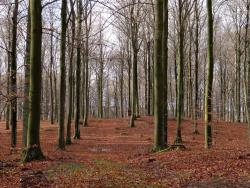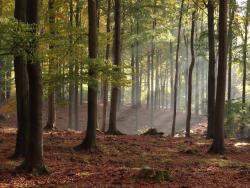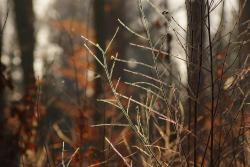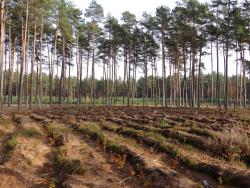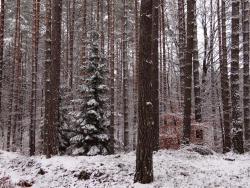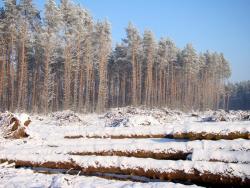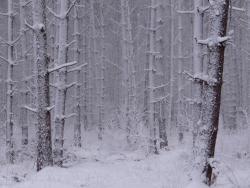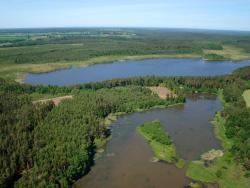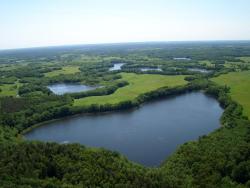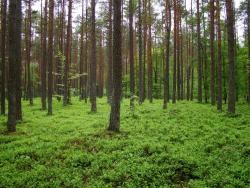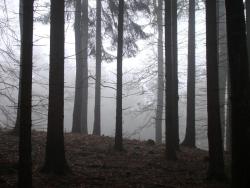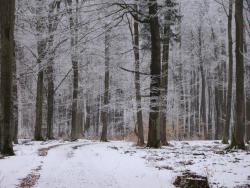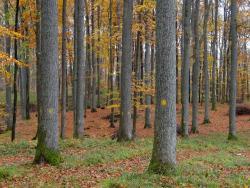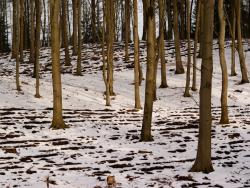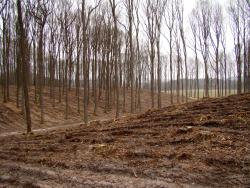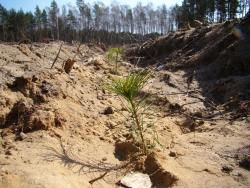 Asset Publisher
Asset Publisher
Polish forests
Poland is in the European lead, while concerning the area of all forests. They cover about 29,2 % of the country territory, and grow within the area of 9,1 million hectares. The overwhelming majority of the forests is state owned, of which almost 7,6 million hectares are managed by the State Forests National Forest Holding..
The number of Polish forest is still growing. The forestation rate of the country has increased from 21 % in 1945 to 29,2 % at the moment. Between 1995 and 2008, the forest area increased by 310 thousand ha. The basis for afforestation works is the "National Programme for Increasing the Forest Cover" (KPZL), assuming an increase of the forestation rate up to 30 % by 2020 and up to 33 % by 2050. Polish forests abound in flora, fauna and fungi. 65 % of the total number of animal species live there.
The forests grow in our country on poor soils, mainly because of the development of the agriculture in previous years. It influences the distribution of the types of the forest sites in Poland. Over 55 % of the forest areas is covered with coniferous forests. In other areas, there are forest sites, mainly the mixed ones. Their small part constitute alder and riparian forests – not more than 3 %.
In the years 1945 – 2011 the area of natural deciduous tree stands within the area of the State Forests National Forest Holding increased from 13 to 28,2 %.
Within the lowlands and uplands the most often occurring tee species is pine. It covers 64,3 % of the forest area of the State Forests National Forest Holding and 57,7 % of private and commune forests. In the mountains the predominant species is European spruce ( in the west) and European spruce with beech (in the east). Domination of pine is the result of carrying on sustainable forest management in the past. Once, the monocultures (crops or cultivations of one species) were the answer to the great demand of industry for wood. Such forests appeared to be quite fragile to climatic factors. They also were often the prey of pests' expansion.
In Polish forests, the share of other tree species, especially deciduous trees have been systematically increasing. The foresters have stepped aside from monocultures – that is why, they try to fit specific species of the forest stand to the natural stand, that would be proper for the given area. Thanks to that, in the years 1945 – 2011, the area of the deciduous tree stands within the lands of the State Forests National Forest Holding increased from 13 to 28,2 %. There occur more and more frequently the following tree species: oaks, ashes, maples, sycamore maples, elms, but also birches, beeches, alders, poplars, hornbeams, aspens, tilias and willows.
Our forests are the most often represented by the forest stands aged 40 to 80 years. The average age of the forest equals 60 years. More and more trees are of big size at the age over 80 years. Since the end of the Second World War, the forests' area has increased up to almost 1,85 million hectares.
Raport o stanie lasów w Polsce 2012
 Asset Publisher
Asset Publisher
 Asset Publisher
Asset Publisher
Lasy nadleśnictwa
Lasy nadleśnictwa
INFORMACJE OGÓLNE
Grunty Nadleśnictwa Świdwin położone są w środkowej części województwa zachodniopomorskiego na terenie powiatów świdwińskiego, białogardzkiego, drawskiego i w niewielkim fragmencie – łobeskiego. Przeważająca część powierzchni Nadleśnictwa to tereny nizinne leżące w zlewni dwóch rzek Parsęty i Regi.
Powierzchnia ogólna zasięgu terytorialnego Nadleśnictwa wynosi 761,65 km2. Obecnie Nadleśnictwo gospodaruje na powierzchni ogólnej 24838 ha (w tym 23453 ha lasów) i podzielone jest na 3 obręby leśne: Podwilcze, Świdwin i Klęcko, w skład których wchodzi 17 leśnictw oraz gospodarstwo szkółkarskie.
Lesistość w zasięgu terytorialnym Nadleśnictwa wynosi 32,3 %.
Ponad połowa lasów Nadleśnictwa Świdwin (68,2%) skupiona jest w 4 dużych kompleksach o powierzchni w przedziale „powyżej 2000,00 ha". Jednakże najwięcej jest kompleksów małych, do 5,00 ha (łącznie – 279); zajmują one 1,8% powierzchni wszystkich lasów Nadleśnictwa.
Charakterystyka przyrodniczo leśna
Według regionalizacji przyrodniczo-leśnej lasy Nadleśnictwa Świdwin położone są w I Krainie-Bałtyckiej, w dzielnicach: 4 – Pobrzeża Słowińskiego i 5 –Pojezierza Drawsko – Kaszubskiego. Występuje tu łagodny klimat bałtycki, z dość wysokimi opadami atmosferycznymi. Przeważają wiatry z kierunków zachodnich. Na przedwiośniu i w okresie późnojesiennym mają one często charakter huraganu. W okresie wiosny wieją często wysuszające wiatry wschodnie. Częstym zjawiskiem są przymrozki późne-wiosenne, szczególnie dotkliwe w szkółkach i uprawach oraz mniej szkodliwe – przymrozki wczesne-jesienne.
Drzewostany na gruntach porolnych wyodrębniono na powierzchni 8392,85 ha, co stanowi 37,0% powierzchni gruntów leśnych zalesionych Nadleśnictwa.
Tło siedliskowe Nadleśnictwa Świdwin tworzą: LMśw – 34,8%, BMśw - 33,1% i Lśw – 18,8%. Pozostałe siedliska zajmują w sumie 13,3%, w tym: 4,0% – Ol, 2,6% – Bśw, 2,1% – BMb, 2,0% – LMw, reszta występuje symbolicznie. Siedliska lasowe występują łącznie na 61,2% powierzchni, a siedliska borowe na 38,8%.
W lasach Nadleśnictwa Świdwin zaewidencjonowano jako panujące 22 gatunki drzew. Głównym gatunkiem lasotwórczym jest sosna, panująca na 55,07% powierzchni. Ważniejszymi gatunkami są również: Bk – 12,06%, Brz – 9,98%, dęby– 7,93% Św – 7,80%, Ol – 5,63% i Md – 0,68%. Pozostałe gatunki występują sporadycznie.
Według bogactwa gatunkowego drzewostany w Nadleśnictwie Świdwin zajmują następujący % powierzchni gruntów zalesionych: jednogatunkowe - 20,78%, dwugatunkowe - 23,43%, trzygatunkowe - 22,72%, cztero- i więcej gatunkowe -33,07%. Drzewostany ponad 100 letnie zajmują powierzchnię 3232,35 ha (14,26%).
Drzewostany do przebudowy zinwentaryzowano na powierzchni 637,13 ha. Średni wiek drzewostanów wynosi 59 lat. Przeciętna zasobność wynosi 272 m3/ha, co w stosunku do zasobności lasów RDLP Szczecinek stanowi ok. 121%, a do zasobności Lasów Państwowych – 113%.


 fot. Paweł Fabijański
fot. Paweł Fabijański
 fot. Paweł Fabijański
fot. Paweł Fabijański
 fot. Paweł Fabijański
fot. Paweł Fabijański






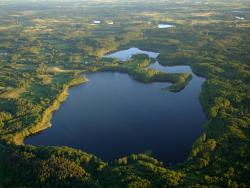 Jezioro Klęckie
Jezioro Klęckie
